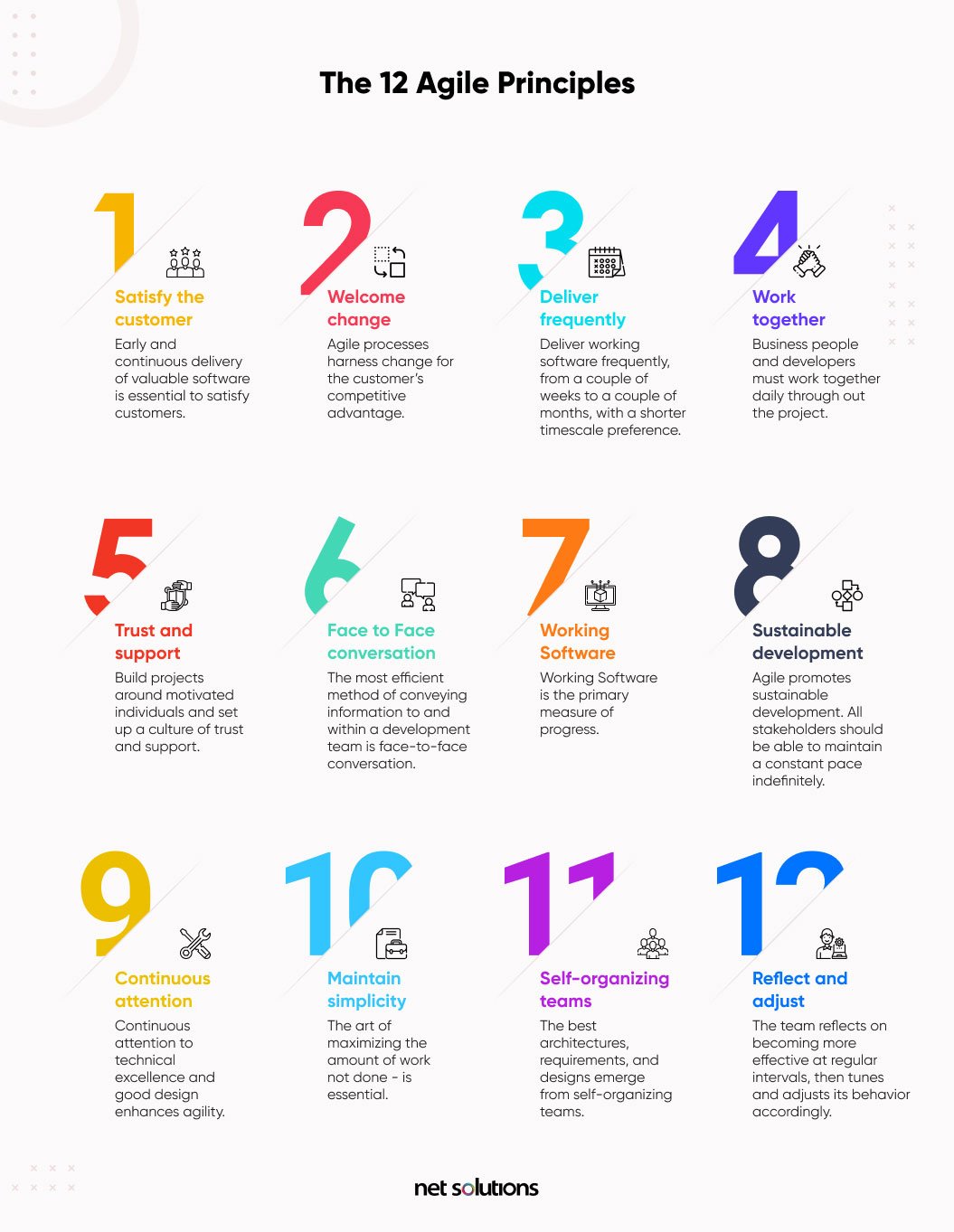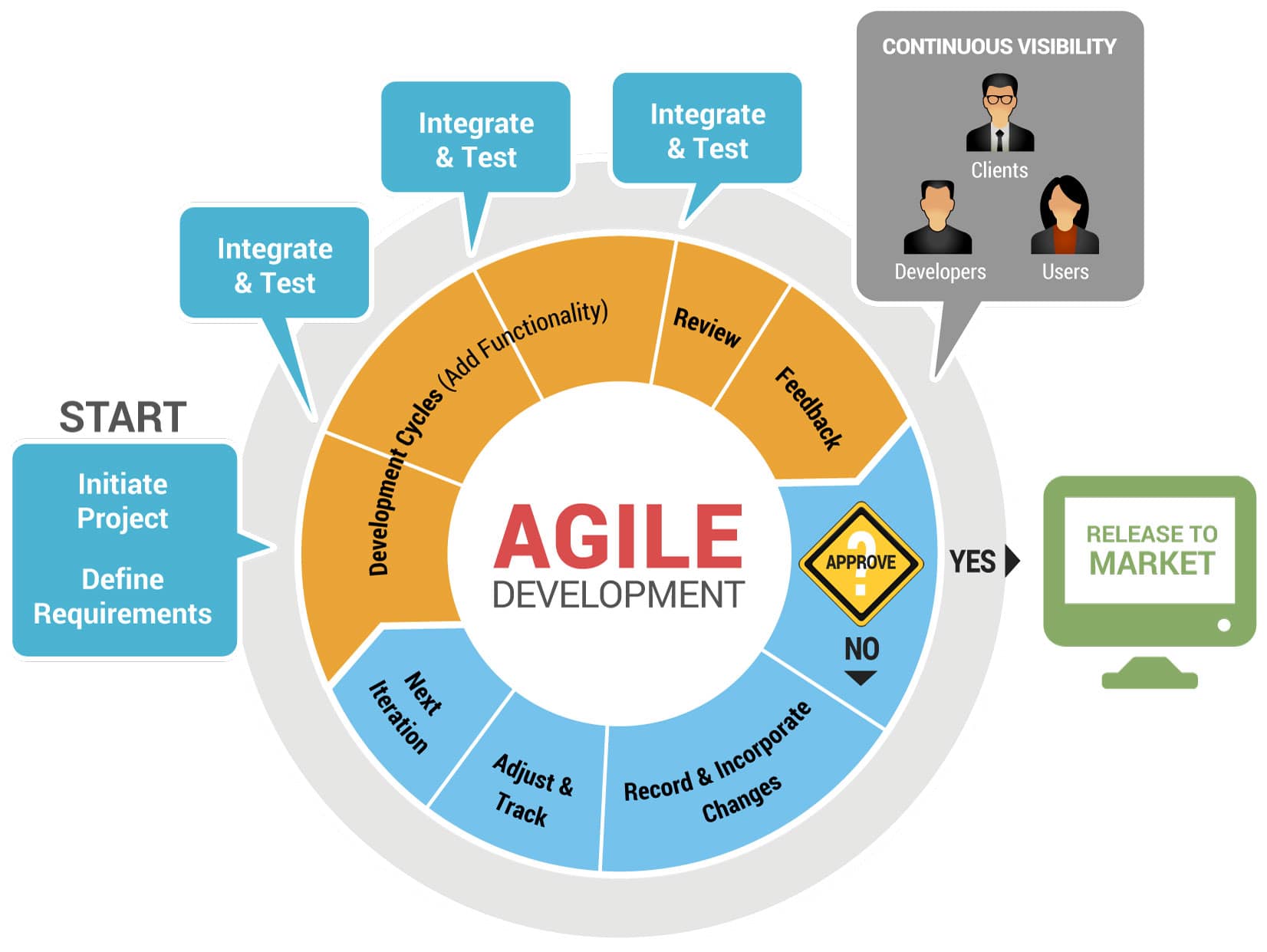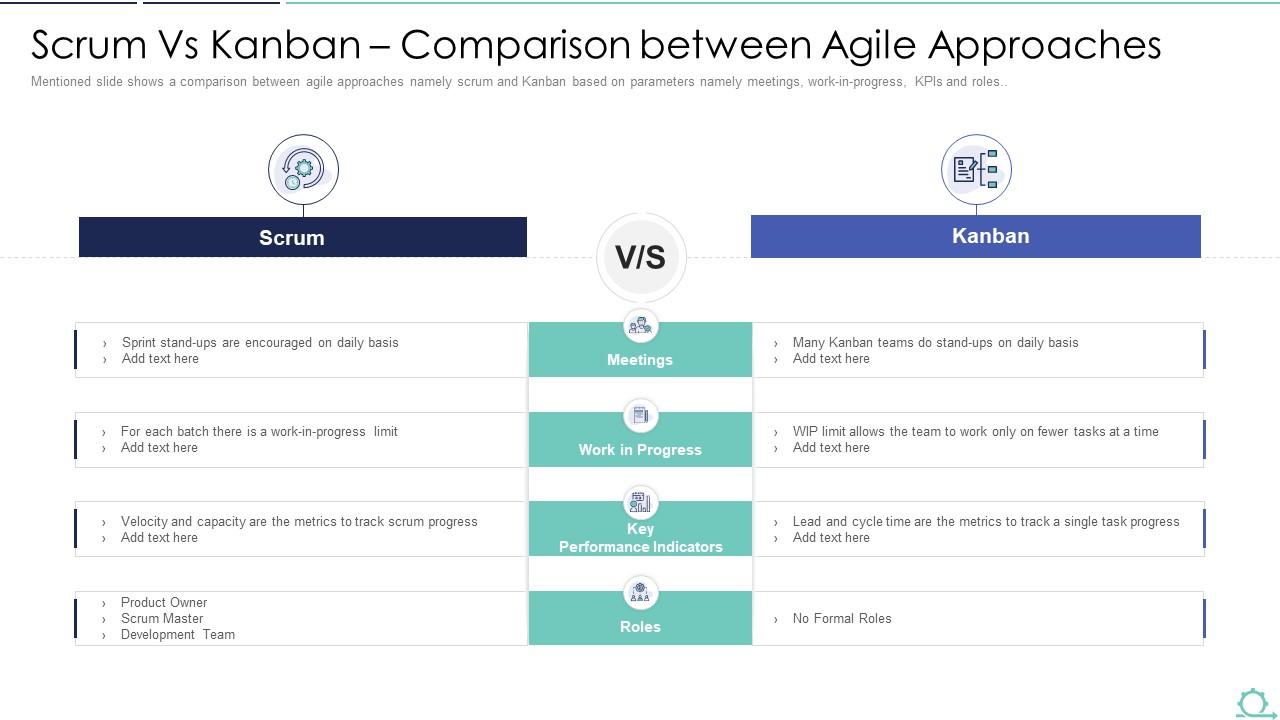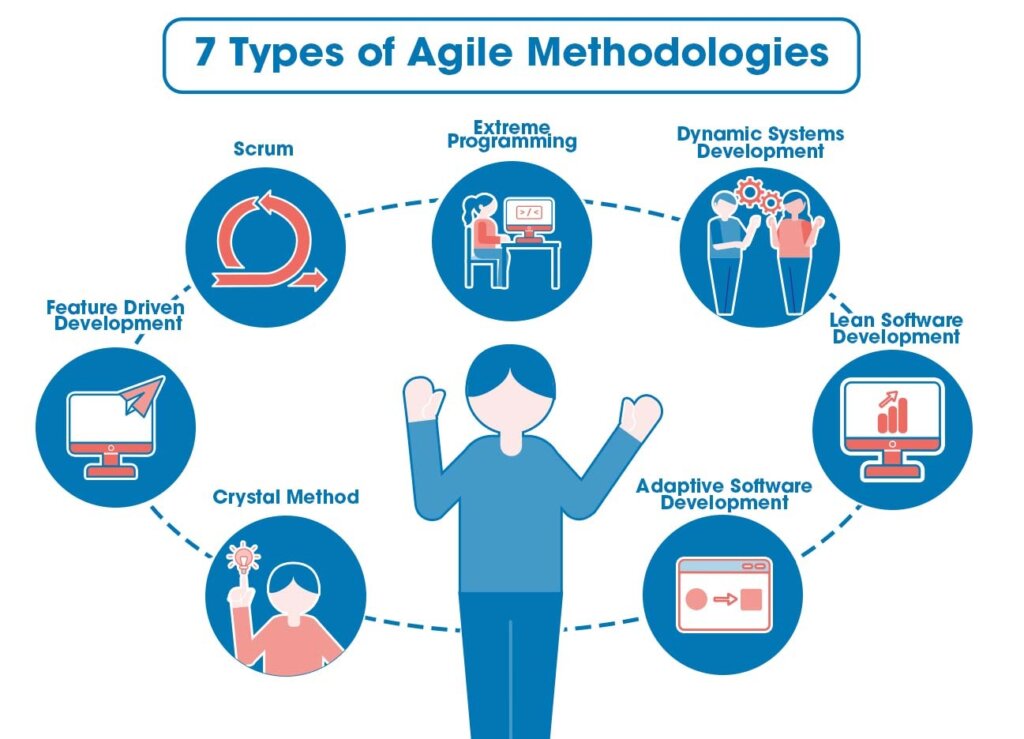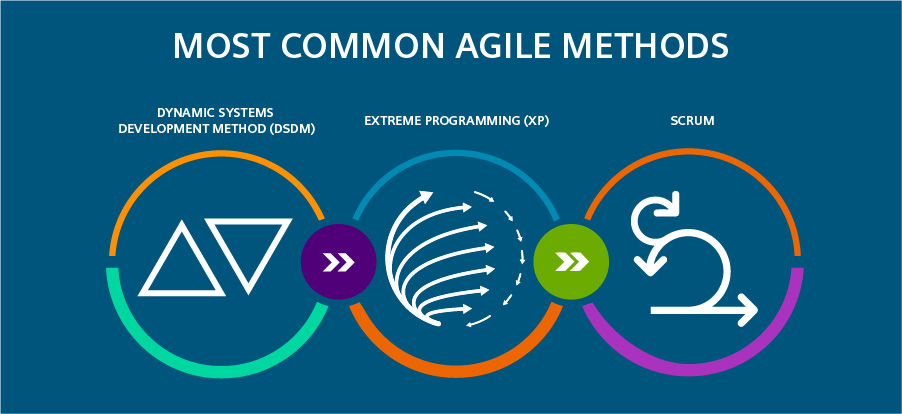What is Agile Development: Understanding the Core Principles
Agile development methodologies have revolutionized the way software is developed, enabling teams to respond quickly to changing requirements and deliver high-quality products faster. At its core, agile development is an iterative and incremental approach to software development that emphasizes flexibility, collaboration, and continuous improvement.
The Agile Manifesto, created in 2001 by a group of software developers, outlines the core values and principles of agile development. These values include individuals and interactions, working software, customer collaboration, and responding to change. Agile development methodologies prioritize delivering working software in short cycles, called sprints or iterations, and continuously improving the development process through retrospectives and feedback.
Agile development differs significantly from traditional waterfall approaches, which follow a linear and sequential process. Waterfall approaches often result in lengthy development cycles, making it challenging to respond to changing requirements. In contrast, agile development methodologies enable teams to adapt quickly to changing requirements, reducing the risk of project failure and improving overall customer satisfaction.
The benefits of agile development methodologies are numerous. By embracing agile, teams can increase their flexibility and responsiveness to changing requirements, improve collaboration and communication, and deliver high-quality products faster. Additionally, agile development enables teams to reduce the risk of project failure, improve customer satisfaction, and increase return on investment (ROI).
Some of the key principles of agile development include iterative development, continuous improvement, and customer collaboration. Iterative development involves breaking down the development process into smaller, manageable chunks, and delivering working software in short cycles. Continuous improvement involves regularly reflecting on the development process and identifying opportunities for improvement. Customer collaboration involves working closely with customers to understand their needs and deliver products that meet their expectations.
Agile development methodologies have been widely adopted across various industries, including software development, finance, and healthcare. By embracing agile, teams can improve their responsiveness to changing requirements, increase collaboration and communication, and deliver high-quality products faster. As the demand for agile development continues to grow, it’s essential for teams to understand the core principles and values of agile development and how to apply them in their projects.
In the next section, we’ll explore how to implement agile development methodologies in your team, including the importance of cross-functional teams, iterative development, and continuous improvement.
How to Implement Agile in Your Team: A Step-by-Step Approach
Implementing agile development methodologies in a team requires a structured approach to ensure a successful transformation. The following steps provide a practical guide to help teams get started with agile:
Step 1: Establish a Cross-Functional Team
A cross-functional team is essential for agile development, as it brings together individuals with diverse skills and expertise to work collaboratively towards a common goal. Identify the necessary roles and skills required for the project, and ensure that the team has a good balance of technical, business, and design expertise.
Step 2: Define the Agile Framework
Choose an agile framework that suits the team’s needs, such as Scrum or Kanban. Define the framework’s principles, values, and practices, and ensure that the team understands its roles and responsibilities within the framework.
Step 3: Set Up a Kanban Board
A Kanban board is a visual representation of the workflow, which helps teams track progress and identify bottlenecks. Set up a Kanban board that reflects the team’s workflow, and ensure that it is regularly updated to reflect changes in the project.
Step 4: Conduct Regular Retrospectives
Retrospectives are an essential part of agile development, as they provide an opportunity for the team to reflect on its progress and identify areas for improvement. Conduct regular retrospectives, and ensure that the team takes action on the feedback and suggestions generated during the retrospective.
Step 5: Prioritize Continuous Improvement
Continuous improvement is a core principle of agile development, which involves regularly reflecting on the development process and identifying opportunities for improvement. Encourage the team to prioritize continuous improvement, and provide resources and support to help them implement changes.
Step 6: Provide Training and Support
Agile development requires a different mindset and skillset than traditional waterfall approaches. Provide training and support to help the team develop the necessary skills and knowledge to work effectively in an agile environment.
Step 7: Monitor Progress and Adjust
Monitor the team’s progress regularly, and adjust the agile framework and processes as necessary. Ensure that the team is working effectively and efficiently, and that the project is on track to meet its goals and objectives.
By following these steps, teams can successfully implement agile development methodologies and improve their ability to respond to changing requirements, improve collaboration and communication, and deliver high-quality products faster.
In the next section, we’ll explore the differences between Scrum and Kanban, two popular agile frameworks, and provide guidance on how to choose the best framework for a specific project or team.
Scrum vs Kanban: Choosing the Right Agile Framework for Your Project
When it comes to implementing agile development methodologies, teams often face a dilemma: which agile framework to choose? Scrum and Kanban are two popular agile frameworks that have gained widespread adoption in recent years. While both frameworks share similar principles and values, they differ in their approach to managing work and delivering value to customers.
Scrum is a more structured framework that emphasizes teamwork, accountability, and iterative progress toward well-defined goals. It is ideal for teams that require a high degree of predictability and control, such as those working on complex software development projects. Scrum teams work in sprints, typically lasting 2-4 weeks, and hold regular meetings to plan, review, and retrospect on their progress.
Kanban, on the other hand, is a more flexible framework that focuses on visualizing work, limiting work in progress, and continuous improvement. It is ideal for teams that require a high degree of adaptability and responsiveness, such as those working on projects with rapidly changing requirements. Kanban teams work on a continuous flow of work, with no sprints or iterations, and focus on delivering value to customers as quickly as possible.
When choosing between Scrum and Kanban, teams should consider their project requirements, team size, and work style. Scrum is a better fit for teams that require a high degree of structure and predictability, while Kanban is a better fit for teams that require a high degree of flexibility and adaptability.
Ultimately, the choice between Scrum and Kanban depends on the team’s specific needs and goals. Both frameworks can be effective in delivering value to customers and improving team productivity, but teams must carefully consider their project requirements and team dynamics before making a decision.
In addition to Scrum and Kanban, there are other agile frameworks that teams can consider, such as Lean, Extreme Programming (XP), and Feature-Driven Development (FDD). Each framework has its strengths and weaknesses, and teams should carefully evaluate their options before making a decision.
Regardless of the agile framework chosen, teams must remember that agile development methodologies are not a one-size-fits-all solution. Teams must be willing to adapt and evolve their approach as needed to ensure that they are delivering value to customers and improving team productivity.
In the next section, we’ll explore the various tools and techniques used in agile development, such as Jira, Trello, and version control systems like Git. We’ll discuss how these tools can enhance collaboration, streamline workflows, and improve overall productivity.
Agile Tools and Techniques: Leveraging Technology to Enhance Collaboration
Agile development methodologies rely heavily on collaboration, communication, and continuous improvement. To facilitate these principles, various tools and techniques have been developed to support agile teams. In this section, we will explore some of the most popular agile tools and techniques, and how they can be leveraged to enhance collaboration and streamline workflows.
One of the most widely used agile tools is Jira, a project management platform that enables teams to plan, track, and manage their work. Jira provides a range of features, including agile boards, backlogs, and sprints, which allow teams to visualize their work and track progress. Another popular tool is Trello, a visual project management platform that uses boards, lists, and cards to organize tasks and projects.
Version control systems, such as Git, are also essential tools for agile teams. Git enables teams to manage changes to their codebase, collaborate on code development, and track changes over time. Other tools, such as Slack and Microsoft Teams, provide real-time communication and collaboration capabilities, enabling teams to stay connected and work together more effectively.
In addition to these tools, agile teams also use various techniques to enhance collaboration and streamline workflows. One such technique is pair programming, where two developers work together on the same code, sharing knowledge and expertise. Another technique is continuous integration, where code changes are automatically integrated and tested, reducing the risk of errors and defects.
Agile teams also use various metrics and KPIs to track progress and measure success. One such metric is velocity, which measures the amount of work completed during a sprint. Another metric is lead time, which measures the time it takes for a feature to go from concept to delivery. By tracking these metrics, agile teams can identify areas for improvement and make data-driven decisions.
Furthermore, agile teams can also leverage technology to facilitate retrospectives and feedback loops. Tools such as Retrium and Feedbackly provide platforms for teams to conduct retrospectives, gather feedback, and identify areas for improvement. By leveraging these tools and techniques, agile teams can enhance collaboration, streamline workflows, and deliver high-quality software faster and more efficiently.
In conclusion, agile development methodologies rely heavily on collaboration, communication, and continuous improvement. By leveraging various tools and techniques, agile teams can enhance collaboration, streamline workflows, and deliver high-quality software faster
Overcoming Common Challenges in Agile Development: Lessons from the Trenches
Agile development methodologies have become increasingly popular in recent years, and for good reason. By emphasizing flexibility, collaboration, and continuous improvement, agile approaches can help teams deliver high-quality software faster and more efficiently. However, implementing agile development methodologies is not without its challenges. In this section, we’ll explore some common obstacles that teams may face when adopting agile, and provide practical advice on how to overcome them.
One of the most significant challenges that teams may face when adopting agile development methodologies is resistance to change. Many team members may be accustomed to traditional waterfall approaches, and may be hesitant to adopt new practices and processes. To overcome this challenge, it’s essential to communicate the benefits of agile development clearly and effectively. This may involve providing training and education on agile principles and practices, as well as involving team members in the planning and decision-making process.
Another common challenge that teams may face is a lack of clear goals and objectives. Agile development methodologies rely on clear and concise requirements, but these can be difficult to define, especially in complex or rapidly changing environments. To overcome this challenge, teams can use techniques such as user story mapping and backlog refinement to ensure that requirements are clear and well-defined. It’s also essential to establish clear goals and objectives, and to ensure that these are aligned with the organization’s overall strategy.
Inadequate training and support is another common challenge that teams may face when adopting agile development methodologies. Agile approaches require a significant shift in mindset and behavior, and teams may need training and support to make this transition successfully. To overcome this challenge, organizations can provide training and coaching on agile principles and practices, as well as ongoing support and guidance. This may involve bringing in external experts or consultants, or providing internal training and development programs.
Finally, teams may face challenges related to scaling agile development methodologies to large and distributed teams. Agile approaches can be difficult to scale, especially in environments where teams are distributed across multiple locations. To overcome this challenge, teams can use techniques such as distributed agile frameworks and virtual collaboration tools to facilitate communication and collaboration. It’s also essential to establish clear processes and procedures, and to ensure that these are followed consistently across the organization.
By understanding these common challenges and taking steps to overcome them, teams can ensure a successful agile transformation and reap the many benefits of agile development methodologies. Whether you’re just starting out with agile or are looking to improve your existing processes, the key is to be flexible, adaptable, and open to change. With the right mindset and approach, you can overcome even the most significant challenges and achieve success with agile development methodologies.
Measuring Agile Success: Key Metrics and KPIs to Track
Measuring the success of agile development methodologies is crucial to understanding the effectiveness of the approach and identifying areas for improvement. By tracking key metrics and KPIs, teams can make data-driven decisions, optimize their processes, and drive continuous improvement. In this section, we will explore the importance of measuring agile success and provide guidance on the key metrics and KPIs to track.
Why Measure Agile Success?
Measuring agile success is essential for several reasons. Firstly, it helps teams to evaluate the effectiveness of their agile implementation and identify areas for improvement. Secondly, it enables teams to make data-driven decisions, rather than relying on intuition or anecdotal evidence. Finally, it allows teams to demonstrate the value of agile development methodologies to stakeholders and secure ongoing support and investment.
Key Metrics and KPIs to Track
There are several key metrics and KPIs that teams should track to measure agile success. These include:
- Velocity: This measures the amount of work that a team can complete during a sprint or iteration. It is a key indicator of team productivity and can help teams to identify trends and patterns in their workflow.
- Lead Time: This measures the time it takes for a feature or requirement to go from concept to delivery. It is a key indicator of the speed and efficiency of the development process.
- Customer Satisfaction: This measures the level of satisfaction that customers have with the product or service being developed. It is a key indicator of the quality and relevance of the product or service.
- Defect Density: This measures the number of defects or bugs that are found in the product or service during testing. It is a key indicator of the quality of the development process.
- Code Quality: This measures the quality of the code being developed, including factors such as complexity, maintainability, and test coverage. It is a key indicator of the sustainability and maintainability of the product or service.
How to Use Data to Inform Decision-Making
Once teams have started tracking key metrics and KPIs, they can use the data to inform decision-making and drive continuous improvement. This can involve:
- Identifying trends and patterns: By analyzing the data, teams can identify trends and patterns in their workflow and make adjustments to optimize their processes.
- Setting targets and goals: Teams can use the data to set targets and goals for improvement, such as increasing velocity or reducing lead time.
- Conducting retrospectives: Teams can use the data to inform retrospectives and identify areas for improvement.
Conclusion
Measuring agile success is crucial to understanding the effectiveness of agile development methodologies and identifying areas for improvement. By tracking key metrics and KPIs, teams can make data-driven decisions, optimize their processes, and drive continuous improvement. By using the data to inform decision-making, teams can ensure that they are getting the most out of their agile implementation and delivering high-quality products and services to their customers.
Scaling Agile: Strategies for Large and Distributed Teams
As organizations grow and become more complex, scaling agile development methodologies can be a significant challenge. Large and distributed teams require special consideration to ensure that agile principles are maintained and that the benefits of agile are realized. In this section, we will discuss the challenges of scaling agile and provide strategies for overcoming these challenges.
Challenges of Scaling Agile
Scaling agile development methodologies to large and distributed teams presents several challenges. These include:
- Communication and collaboration: As teams grow and become more distributed, communication and collaboration can become more difficult. This can lead to misunderstandings, misaligned priorities, and decreased productivity.
- Coordination and alignment: Large and distributed teams require coordination and alignment to ensure that everyone is working towards the same goals. This can be difficult to achieve, especially when teams are spread across different locations and time zones.
- Scalability of agile frameworks: Traditional agile frameworks, such as Scrum and Kanban, may not be suitable for large and distributed teams. New frameworks and approaches are needed to address the unique challenges of scaling agile.
Strategies for Scaling Agile
Several strategies can be employed to overcome the challenges of scaling agile development methodologies. These include:
- Implementing agile frameworks like SAFe or LeSS: SAFe (Scaled Agile Framework) and LeSS (Large-Scale Scrum) are agile frameworks specifically designed for large and distributed teams. These frameworks provide guidance on how to scale agile principles and practices.
- Using technology to facilitate communication and collaboration: Technology can play a significant role in facilitating communication and collaboration in large and distributed teams. Tools like Slack, Microsoft Teams, and Zoom can help teams stay connected and aligned.
- Creating a culture of transparency and trust: Transparency and trust are essential for successful agile teams. Leaders should foster a culture of openness and trust, where team members feel comfortable sharing their ideas and concerns.
- Providing training and coaching: As teams grow and become more complex, training and coaching become essential. Leaders should provide ongoing training and coaching to ensure that team members have the skills and knowledge needed to succeed in an agile environment.
Best Practices for Scaling Agile
Several best practices can be employed to ensure successful scaling of agile development methodologies. These include:
- Start small and scale incrementally: Scaling agile should be done incrementally, starting with small teams and gradually expanding to larger teams.
- Focus on culture and values: Agile is a cultural and values-based approach. Leaders should focus on creating a culture of agility, rather than just implementing agile processes and practices.
- Monitor and adjust: Scaling agile requires ongoing monitoring and adjustment. Leaders should regularly assess the effectiveness of their agile implementation and make adjustments as needed.
Conclusion
Scaling agile development methodologies to large and distributed teams requires careful consideration and planning. By employing strategies like implementing agile frameworks, using technology to facilitate communication and collaboration, and creating a culture of transparency and trust, leaders can overcome the challenges of scaling agile and realize the benefits of agile development methodologies.
Conclusion: Embracing Agile Development Methodologies for Long-Term Success
In today’s fast-paced and ever-changing business landscape, adopting agile development methodologies is crucial for long-term success. By embracing the core principles of agile, teams can increase flexibility, improve collaboration, and deliver high-quality products faster. As discussed throughout this article, implementing agile development methodologies requires a deep understanding of the underlying values and principles, as well as the ability to adapt to changing requirements.
By following the step-by-step approach outlined in this article, teams can successfully implement agile development methodologies and reap the benefits of increased productivity, improved customer satisfaction, and enhanced competitiveness. Whether using Scrum, Kanban, or a hybrid approach, the key to success lies in continuous improvement, iterative development, and a commitment to delivering value to customers.
As teams navigate the complexities of agile development, it’s essential to remember that there is no one-size-fits-all approach. By leveraging the right tools and techniques, overcoming common challenges, and measuring success through key metrics and KPIs, teams can ensure a successful agile transformation. For large and distributed teams, scaling agile development methodologies requires careful planning, effective communication, and a willingness to adapt to changing circumstances.
In conclusion, agile development methodologies offer a powerful framework for teams to deliver high-quality products and services in a rapidly changing world. By embracing the principles of agile, teams can unlock their full potential, drive innovation, and achieve long-term success. Whether you’re just starting your agile journey or looking to improve your existing processes, remember that the key to success lies in continuous learning, adaptation, and a commitment to delivering value to customers.

